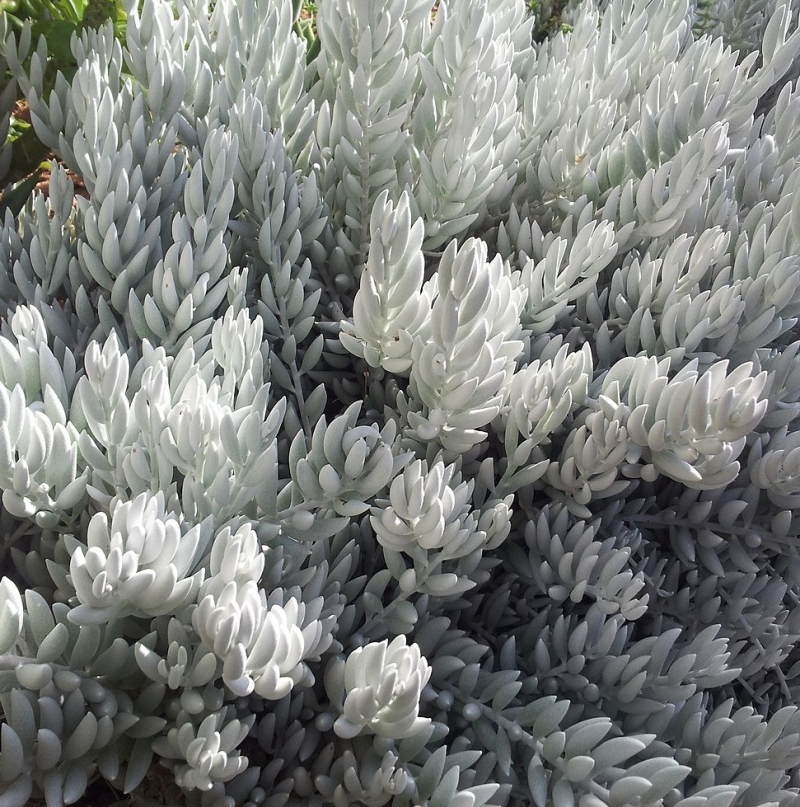


| synonyms | Kleinia haworthii Cacalia haworthii Kleinia tomentosa |
|
| height | 6–14in | |
| width | 6–12in | |
| tolerates | Drought, Heat, Pots, Wind | |
| water needs |
Low | |
| water info |
Most succulents are from the deserts of the world and as such like to go totally bone dry between waterings, making them very low-maintenance. If you see your cocoon plant begin to shrivel or lose firmness, your plant is likely totally dry and should be watered. This one comes from an area of the Little Karoo with sparse winter rainfall and dry summers and as such is unforgiving of excessive water in either season. An extra sharp draining mix will help with wet winters or overzealous summer watering. Remember that if kept in a small pot your plant will want more frequent watering. |
|
| hardy to |
22F | |
| exposure | Full Sun | |
| indoor outdoor |
Outdoor | |
| drainage | In Ground: Cactus Mix, In Pots: Cactus Mix, Requires Perfect Drainage | |
| fertilizing | All Purpose | |
| origin | NW South Africa | |
| california native |
No | |
| sunset zones |
9, 12–14, 16–24 |
Full Sun
Six or more hours of sun beams directly landing on the plant's leaves.
Part Shade
Three to five hours of sun beams directly landing on the plant's leaves.
Part Sun
One to two hours of sun beams directly landing on the plants leaves.
Full Shade
The plant is never fully lit by sun beams,
but is in a bright spot or has dappled sunbeams playing over the leaves throughout the day.
Deep Shade
The plant never has dappled light on the leaves, and is in a place that feels dim, even on a nice sunny day.
